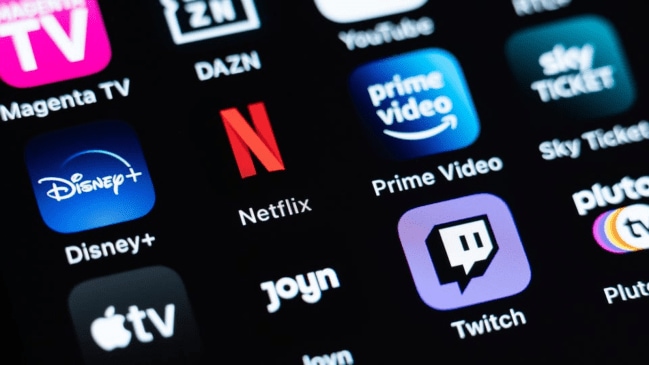Opinion Best of Both Sides: OTT allows experimentation sans restrictions that accompany cinema, TV
OTT platforms and theatres exist in parallel to each other. The two worlds are pushing and pulling each other constantly, but one will not destroy the other
 In the age of OTT, between the streaming service at home and the movie theatre outside, what is shaping the new viewing experience?
In the age of OTT, between the streaming service at home and the movie theatre outside, what is shaping the new viewing experience? In the mid-2010s, the emergence of OTT platforms allowed young filmmakers like me to tell stories our way. The OTT boom was the only reason I could direct my own show as soon as I did. Before this boom, the path to directing your first piece of content was a long-drawn one. Talent was one of the factors, but networking was possibly more important than anything else. OTTs, in that sense, democratised the filmmaking process. At the start, if you had an interesting idea, someone somewhere was willing to back you up. Spaces for experimentation emerged without most of the restrictions that cinema and TV suffered from and in the process, the chokehold the two mediums had on the industry broke.
The OTT boom threatened to wipe out both the TV and film industries. Several TV giants created their own OTT platforms. Some even transitioned their programming to digital first. Within the first few years, the movie catalogues of all platforms grew by leaps and bounds. Many obituaries of theatres and TV were written in this period. The assumption was that people would rather pay the yearly fee and watch in the comfort of their homes at a time convenient to them than spend on the weekly theatre experience. For a family of four in any metropolitan city, going to a theatre can quickly turn into a Rs 2,000 expense, with the tickets and popcorn and cold drinks. Initially, these claims were dismissed as hyperbole — it was a family outing that the smaller screens could not replace. But Covid changed all that. The pandemic caused a serious shift in viewing habits. Going to the theatre was not an option during the lockdowns, and even once things were open again, people were wary of going to the halls.
Through 2021 and into 2022, movies sure to do well in the theatres either got lukewarm numbers like 83, or failed like Salman Khan’s Antim or Akshay Kumar’s Bell Bottom. Bollywood A-listers delivered flops, sometimes massive ones. And again, there were obituaries of the big screen. But 2022 also saw RRR, KGF 2 and Ponniyin Selvan make incredible amounts of money. The conversation shifted as the industry tried to arrive at a formula for success in the theatrical run. This time, Bollywood’s obituary was written, and industries in the south were now the beacon of hope.
Then in 2023, Jawan, Pathan and Animal broke box office records. Granted, Shah Rukh Khan helmed the first two. However, till these hits, many had begun to write off his acting career. At this point, the argument changed: Only “big”, “event” films would survive. Smaller films had to accept that they do not garner audiences in cinema halls anymore, and they were to be relegated to OTT releases. 12th Fail emerged as a huge success. It shows that if there are interesting stories to be told, audiences exist for them.
OTT platforms expand the world of storytelling. In essence, though, they are experienced in isolation. Theatres offer a community experience that is unparalleled by other forms. Ajay Sing Rathore’s funeral in Rang De Basanti, with ‘Luka Chuppi’ by AR Rahman playing, hits harder in the theatre when you aren’t distracted by your phone. Tumbbad is scarier in the hall and Khosla ka Ghosla is funnier when you’re laughing together with strangers. Emotions are infectious and you can’t find a sense of community with earphones on. Going to the theatre continues to function as a bonding experience, with friends, family, colleagues or lovers.
There is no denying the fact that OTT has changed how content is viewed, especially by producers. Every film script has to go through a lens of whether it’s an OTT film or one that deserves a theatrical release. Within scripts, every single character is put through the same lens. Often, this analysis pushes things to the OTT screen as opposed to the theatre. A great example of this is Imtiaz Ali’s Chamkila, which found itself on OTT and did very well. In the same year, Shaitaan, Stree, Munjya and Kalki found their audiences in theatres.
OTT platforms and theatres exist in parallel to each other. The two worlds are pushing and pulling each other constantly, but one will not destroy the other. OTT platforms are still searching for their footing, constantly experimenting with new structures to make themselves self-sustaining in the long run. Cinemas, too, have been experimenting with ways to stay profitable: From formulaic movies to expensive popcorn, everything has been thrown at audiences, and even though we hate on the films we do not like, we continue to return for more.
If new forms of consuming art killed their predecessors, photography would have killed painting by the end of the 19th century.
Raza is a filmmaker and has directed shows on OTT platforms, including The Other Woman and Doctors





